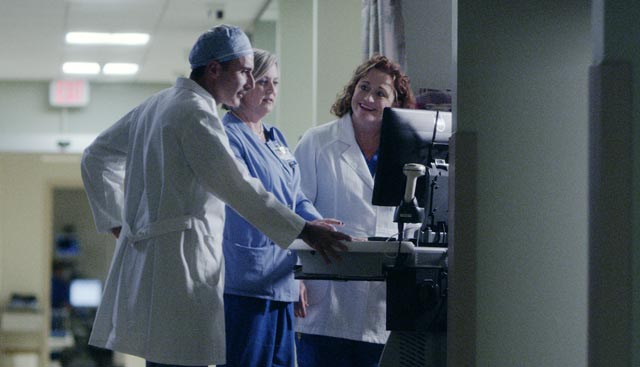Lung Cancer Diagnosis

Lung cancer is complex because it can involve several types of tumors as well as many different symptoms, including coughing, wheezing, shortness of breath, chest pain and sometimes no symptoms at all. Because each case is unique, an early and accurate diagnosis is essential to ensure the best possible outcome and quality of life.
Is there a screening test for lung cancer?
Currently, the only screening test available for lung cancer is a low-dose computed tomography (LDCT) scan. Due to the risks involved—including false positive results, overdiagnosis and radiation exposure—LDCT is not recommended for routine use in individuals who do not have symptoms. According to the latest guidelines established by the National Comprehensive Care Network (NCCN), lung cancer screening is appropriate only for individuals who are:
- 50 years of age or older
- Current or former smokers with a 20-pack year smoking history (pack year = total # of years smoked X # of packs smoked per day)
- For example, one pack a day for 20 years, two packs a day for 10 years, etc.
Because there is no general screening test for lung cancer, it is important for everyone to learn about the symptoms and promptly discuss any unusual changes with a physician.
Imaging tests used to diagnose lung cancer
If lung cancer is suspected based on the symptoms, the first step in the diagnostic process usually involves imaging to provide the physician with a detailed view of the lungs and chest cavity. Some imaging tools that are frequently used to diagnose lung cancer include:
- Chest X-ray – A low dose of radiation is used to create black-and-white pictures of the bones in the chest and spine and the lungs, airways, heart and blood vessels.
- Computed tomography (CT) scan – Multiple X-rays are taken at different angles and combined by a computer to create three-dimensional, cross-sectional images of the organs and tissues in the chest.
- Magnetic resonance imaging (MRI) scan – A powerful magnetic field, radio waves and a computer are used to create detailed pictures of the structures in the chest.
- Positron emission tomography (PET) scan – A safe amount of a mildly radioactive tracer is injected into the bloodstream. The tracer then collects in certain tissues and illuminates biochemical changes in the images captured by a PET scanner.
Follow-up tests used to diagnose lung cancer
If an imaging test reveals a suspicious lesion or another abnormality that could indicate lung cancer, the physician will likely order further testing, which may include:
- Needle biopsy – Guided by real-time CT imaging, a physician inserts a long, hollow needle into the suspicious tissue and removes a small sample.
- Bronchoscopy – A physician inserts a flexible, lighted tube (bronchoscope) into the lung’s airways via the nose or mouth and retrieves a small sample of tissue or fluid.
- Sputum cytology – A physician takes a sample of coughed-up mucus.
- Endobronchial ultrasound (EBUS) – A physician uses a transbronchial needle aspiration to retrieve tissue or fluid samples from the lungs.
- Thoracentesis – A physician inserts a needle and drains fluid buildup from the cavity around the lungs.
- Thoracotomy – A physician removes a sample of tissue or fluid from the lungs or chest cavity during open chest surgery.
If a microscopic analysis of the biopsied material detects lung cancer, the physician will order follow-up testing to evaluate the size and extent of the main tumor and determine whether the cancer has spread to nearby lymph nodes or distant organs and tissues. Known as cancer staging, this process provides valuable information that the physician will consider when evaluating treatment options.
Medically reviewed by Dr. Eric Toloza.
Diagnostic and screening services at Moffitt Cancer Center
Moffitt Cancer Center is relentless in charting new paths, and we are constantly challenging the status quo. In recognition of our commitment to making a difference in our community by providing responsible, high-quality lung cancer screening services, we have been designated a Lung Cancer Alliance Screening Center of Excellence by the GO2 Foundation for Lung Cancer. We also offer a full complement of the latest diagnostic services as well as second opinions for individuals who have already received a lung cancer diagnosis.
To learn more, please contact Moffitt Cancer Center at 1-888-663-3488 or complete our new patient registration form online. You can consult with a lung cancer specialist in our Thoracic Oncology Program with or without a referral. As Florida’s top cancer hospital, we don’t just treat cancer—we treat the whole patient—and that’s one reason why we achieve the best possible outcomes.
References
U.S. Preventive Services Task Force – Lung Cancer Screening
Centers for Disease Control and Prevention – How Is Lung Cancer Diagnosed and Treated?
American Lung Association – How Is Lung Cancer Diagnosed?
